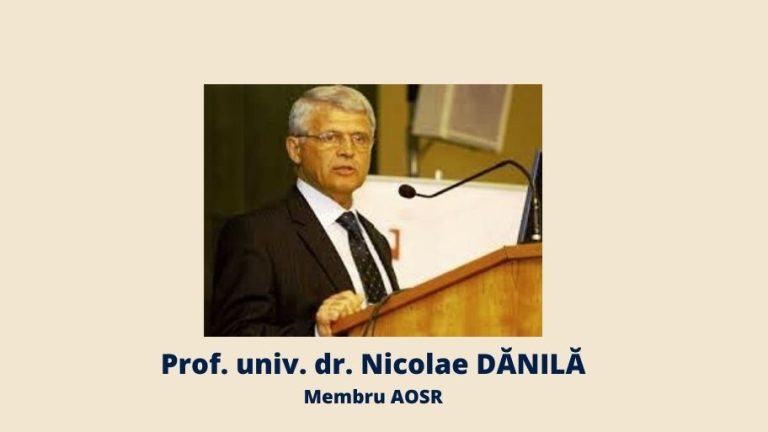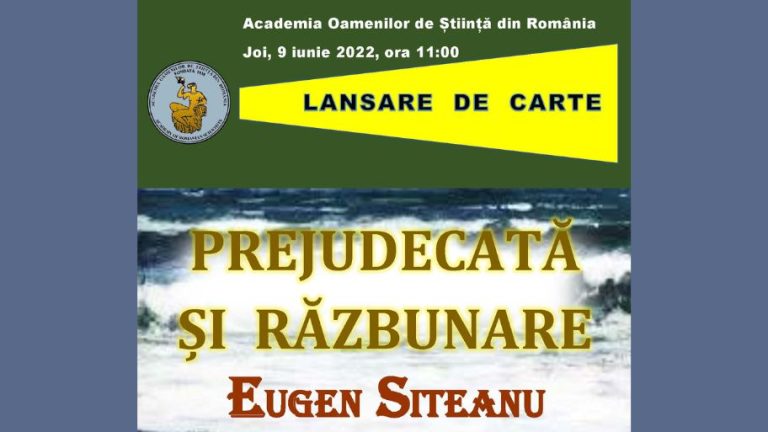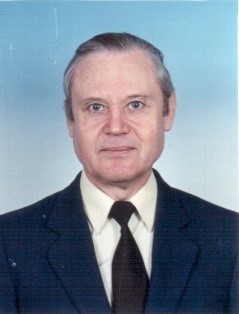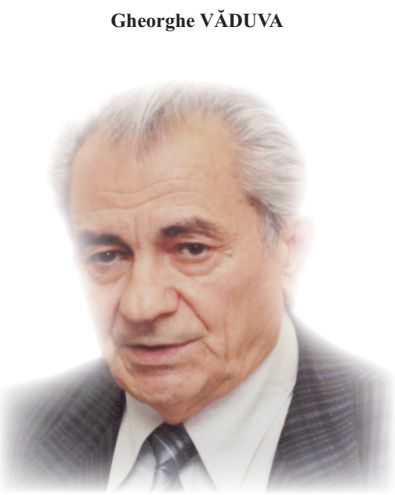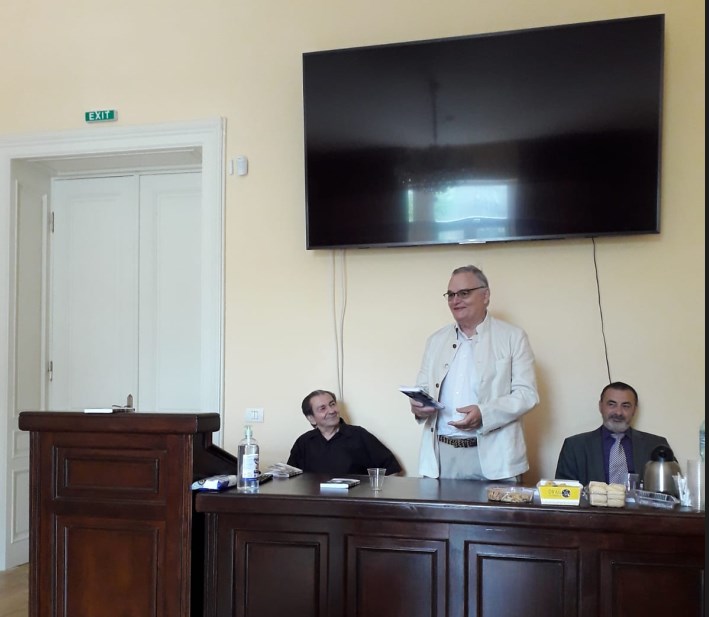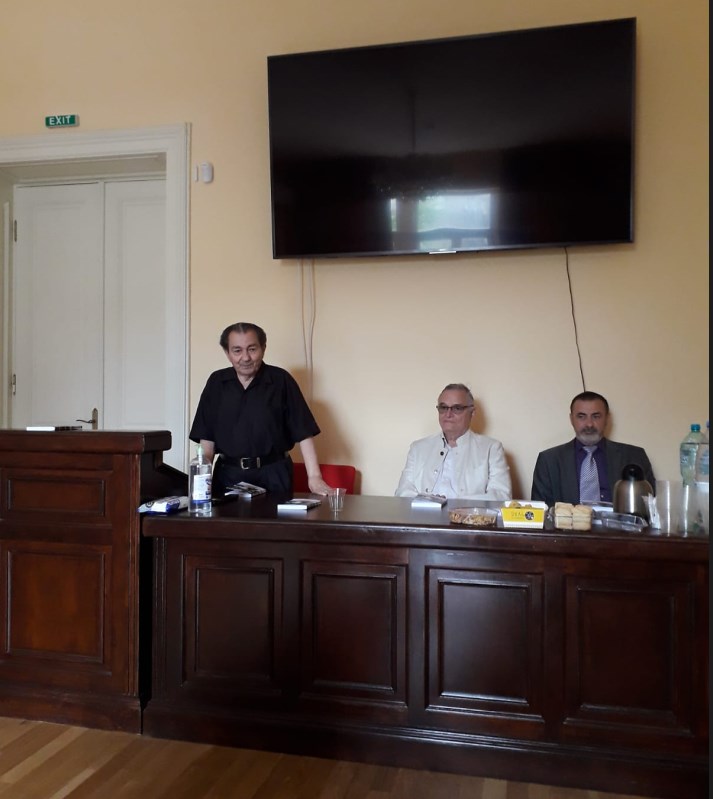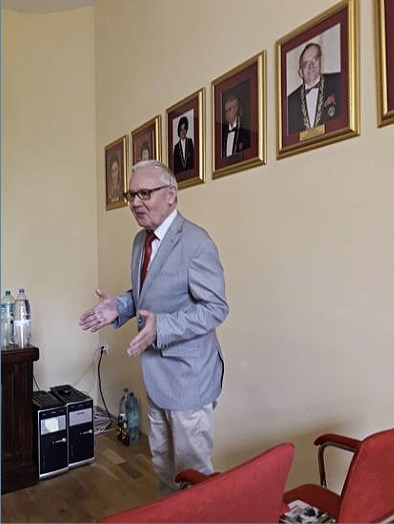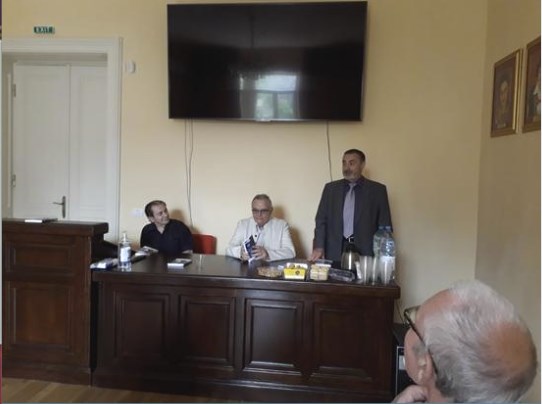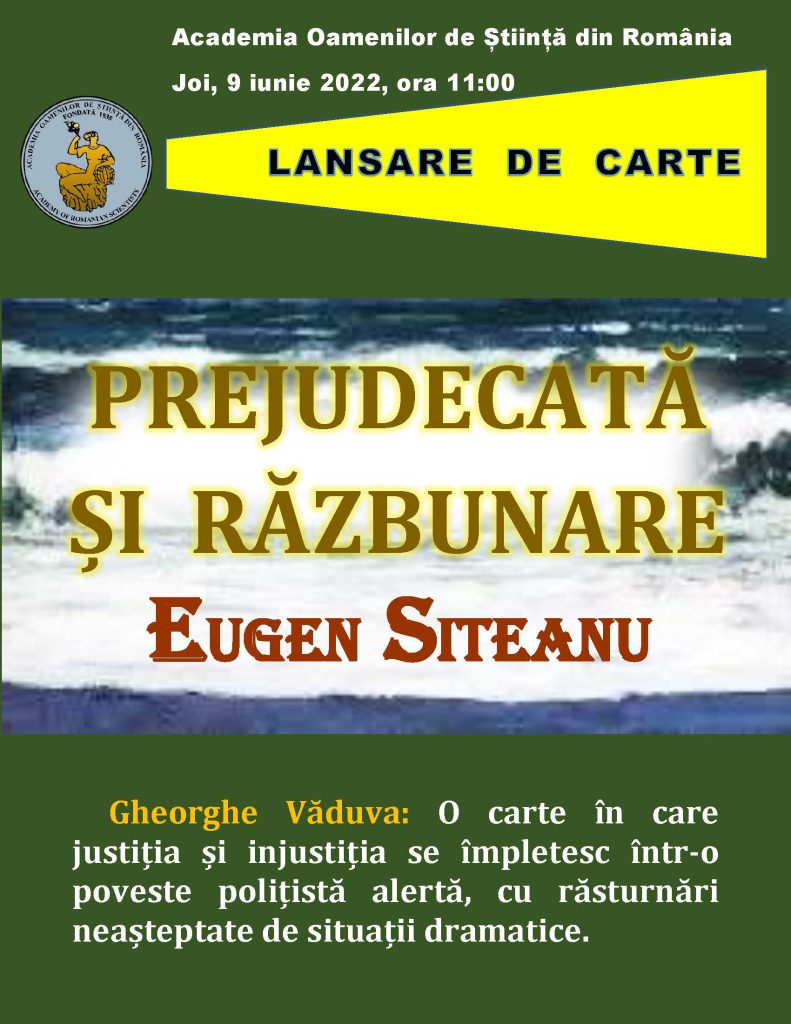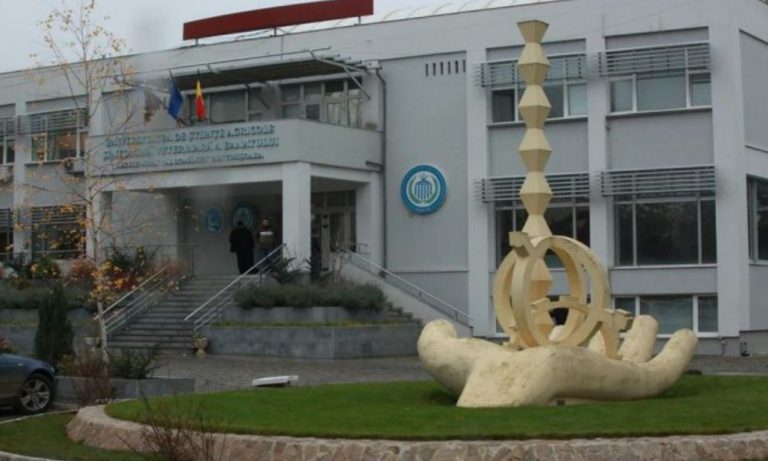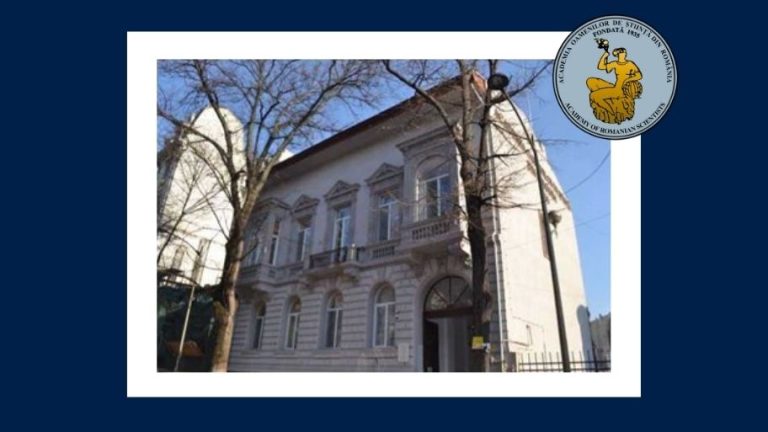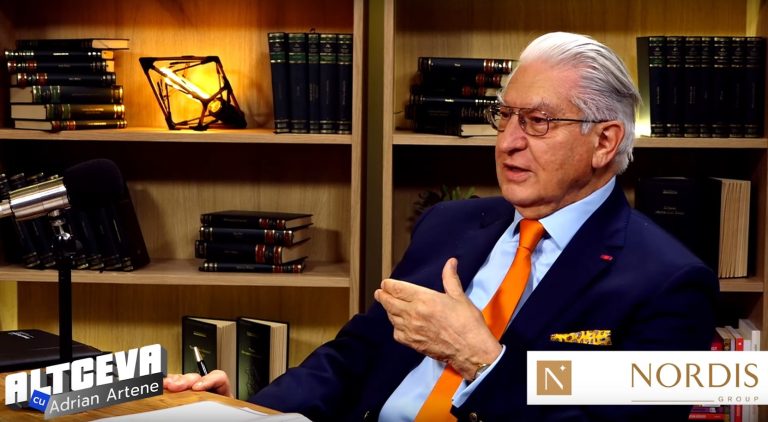As it is known today, two types of science operate on the development front; basic and applied science. The applied sciences of course have their role in finding the means to implement the knowledge fund in one field or another, by obtaining as a result of specific research, the technology that it transfers to industry for realization, for the good of human society. But the great merit in the development of knowledge belongs to the fundamental science that realizes the basin of essential knowledge from which then the applied science looks for ways to put it into practice. Never before has a great result of fundamental science allowed immediate applications to be seen. It took some time for this to happen. For example, when Clark Maxwell established the equations of the electromagnetic field in the second half of the century. In the nineteenth century, they were as little understood as the equations of Einstein’s theory of general relativity in the early twentieth century. Nobody saw a practical application then! But slowly, the telephone, the radio, the television, and nowadays the Internet appeared. It must be said that the advancement of basic science is enhanced by the achievements of applied science, because it provides technical tools that allow fundamental research to make really big strides forward. Just think of the Large Colllder in Geneva or the ELI laser in Magurele. The two types of science are closely intertwined in a circle of interdependence.
The topic announced in the title is as exciting as it is complex. It is not accessible with the help of a single fundamental scientific discipline, say genetics. As we will see in order to take important steps towards increasing longevity, it was necessary to work together several fundamental disciplines, such as physics, chemistry, biology, mathematics, computer science and especially genetics, in symbiosis with their sisters applied sciences.
Life is a supreme datum and we live it only once. That is why we all want to live as long as possible, but not anyway, but to have a healthy life as long as possible before the final collapse.
Unfortunately, as is well known at the moment, the period before the end is not rosy at all. He dies slowly and painfully most of the time. Cocktails of drugs with far more disastrous consequences, breathing apparatus, stent over stent, fractured bone surgery, surgery on the colon, lungs or heart, chemotherapy, radiation therapy and ruinous hospital bills if treatment is used in private. The inhabitants of civilized countries usually spend a decade or more passing from disease to disease until the end of their existence. And the bottom line is that everyone thinks this is absolutely normal. As life expectancy continues in poorer countries, the number of people who will go through these enduring experiences will increase explosively, reaching billions.
In this unfortunate context, however, there have been scientists in the field such as D Sinclair (1) a professor of genetics at Harvard or LP Guarante (2), a professor at MIT, and of course many others who will be evoked along the way, who ask the question. why does it have to be this way? If it were not possible to reduce this extremely painful load before the end, possibly until its complete cancellation, in an attempt to prolong the life of man, which is obviously in progress. In other words, to have a disease-free life, a healthy life, to the end. Or even more so, if we could not postpone this end beyond the limits known to the luckiest of men!
When they first came up with such ideas, they seemed completely utopian, especially beyond the age of 122, which is documented as being achieved by the Frenchwoman Jeanne Calment, an absolute world record for human longevity. And especially when the question arose for the first time whether in extremes death could not even be defeated in the end, a huge scandal arose, considering that this would mean the violation of the order left by the divinity.
This essay will try to prove on the basis of the existing documentation that the latest developing theory launched by D. Sinclair (1) and entitled The Informational Theory of Aging is capable of reducing or even canceling the first bad period of the final part of the to the life of an individual, in other words to ensure a healthy life until the end and then in a more distant approach, to be able to prolong life progressively until even the eradication of death.
Until now, the planet has been home to 70-100 billion people (1), (3). It is well known that people’s living standards are slowly increasing. Most of them did not even reach the age of 30 at first, but we contemporary people have succeeded. Many of them failed to reach the age of 50 or 60, but we did. For the most part, these increases in life expectancy, / human longevity /, have been due to access to drinking water resources and stable food sources, and in the last hundred years to the widespread emergence of medication and surgical techniques. more efficient. But although the average life expectancy continued to rise from millennium to millennium, the maximum limit remained the same. This is clear from the earliest written evidence in human history. Thus we know that there have been people since ancient times who have reached 100 years and others who have exceeded this figure by a few years. But very few are 110 years old and almost no one is 115 years old. One person, Jeanne Calment, turned 122 in 1997!
It must be said that there is a difference between prolonging longevity and prolonging vitality. Mankind is capable of both, but keeping people alive – decades after their lives came to be defined by pain, weakness, and immobility, is not a virtue at all! It is essential to prolong vitality, ie not just a longer life, but especially a more active, happier and healthier, without disease and pain, this being a goal worthy of the best possible appreciation.
The fundamental question is whether the goal of eradicating death does not contradict the major laws of nature. In anticipation, we will say the following. Man is in itself a system governed by the law of entropy (3). Physics states that in all systems entropy, which is a measure of disorder, increases. At birth the entropy is quasinous and during the period of physical growth of the body, it increases slightly until maturity when the physical growth stops, after which in an interval of about 20 years, it almost stagnates, after which it shows a more accentuated growth. as man approaches old age and enters it. In the last part of life when man is burdened with disease and immobility, the greatest increase in entropy takes place. In this last part of life the disorder in the system grows inexorably and so much that it becomes intolerably high, and man ends up dying. When this happens the entropy of the system has reached its maximum. At first glance, human life cannot be prolonged. But the human system is not a closed system, but an open system in the sense that it bears external influences. This allows us to intervene decisively by introducing in the form of medication, or surgical techniques, or in other words, negative entropy, which no longer allows the entropy of the system to reach as quickly as its own maximum at which the extinction occurs. In other words, man moves away from death, and if the potion of negative entropy introduced becomes even greater, it reaches the situation where the entropy of the human system begins to decrease, tending to zero, which comes to say that man really rejuvenates!
In conclusion, not only does man not die, but he can become even younger, the aging process being simply reversed! Here is a conclusion that will infuriate the followers of the natural order established by the divinity, but who in time will have to bow before the evidence.
It takes radical thinking to understand the significance of the process of aging and death for the human species. There is nothing in billions of evolution that has prepared us for this and hence the irresistible temptation for most of us to believe that the control of aging and death cannot be achieved. Of course, we still have a long way to go before we can control death, but we are close enough to push the maximum limit of life further. Next we will try to show how it is, and what can be done from now on and later in time.
PRE-EXISTING THEORIES OF AGING
Until the second half of the twentieth century, it was generally accepted that organisms age and die for the good of the species, an idea that dates back to Aristotle. The idea is quite intuitive and that is why it has been widely supported in the scientific community. However, it is terribly wrong. We are not dying to make room for the next generation!
In the 1950’s, three evolutionary biologists Haldane, Medawar, and Williams (2) proposed some important ideas about the causes of aging. Thus, regarding its longevity, they launched the opinion that individuals take care of themselves and that driven by their genes, essentially selfish, they try to multiply as quickly and as much as possible as long as they do not lose their lives in this. trial. In this way, although individuals age and eventually die, their genes survive their offspring and the cycle repeats itself. The bottom line is that our genes never want to die. But if so, why don’t we live forever? The two biologists claim that we are aging because the forces of natural selection needed to build a robust body are strong at 18, after which they decline when we reach 40, because until then we probably managed to multiply our selfish genes to ensure our survival by transferring descendants. The decline continues until the forces of natural selection reach zero and we die, but our genes do not.
Thomas Kirkwood (1) of Newcastle in the 1970s approached the issue of aging from the perspective of the resources available to the body. Species always have access to limited resources of energy, food, water. This causes them to evolve to a point at the intersection of two completely different lifestyles, multiply quickly and die quickly, or multiply slowly and maintain their body or soma for longer. He concluded that organisms cannot multiply quickly and still maintain a healthy body, because there are simply not enough resources to have both at the same time. This is to say that the offspring of mutated species that caused them to multiply rapidly and much and tried to die of distant old age quickly ran out of resources and thus managed to outperform the genetic pool. This may explain why a mouse lives 3 years, but leaves behind a whole series of offspring, while some birds of prey can reach 100 years, making only two chicks a year.
These theories fit the observations and are generally accepted by the community. Individuals do not live forever because natural selection does not work for immortality if the configuration of a body is already working well enough to pass on its selfish genes through its offspring. And because resources are limited for all species, species have evolved, allocating their available energy to either reproduction or longevity, but never to both simultaneously. These considerations apply to all species, but not to humans.
Indeed, taking advantage of a relatively large brain and a prosperous civilization to compensate for the disadvantages of evolution, such as weak limbs, sensitivity to cold and heat, underdeveloped smell, and eyes that see only in the visible spectrum, the human species has acquired an unusual status characterized by the essential feature of the fact that it can innovate. In this way he got plenty of food, nutrients and water, greatly reducing deaths from pests, vulnerability, infectious diseases and wars, which were once serious obstacles to greater longevity. Once removed, after millions of years of evolution, the human species can hope for an ever-increasing time horizon of individual life, approaching that of other successful species in this regard. But it won’t have to wait millions of years for this to happen! Simply because it will use its main asset, intelligence, to invent new supplements, drugs and technologies that will give it a robustness for a body that will allow it access to a longer life, developing features that evolution failed to provide them.
In order to make real progress in improving the quality of life of the human species in terms of aging, a unified explanation of all the causes of aging is needed. And this should not be done at the evolutionary level, but at the fundamental level. But it is not at all easy to do this, because it will have to satisfy all the known laws of physics as well as chemistry and especially be consistent with centuries of biological observations. In short, it should explain at the same time the simplest and most complex living phenomena that have ever existed. So it should come as no surprise that there has never been a unified theory of fundamental aging, and not because there have been no attempts.
In this context, we will mention the attempt made independently by Medawar and Leo Szilárd (2) who each proposed the idea that aging is caused by DNA damage, which translates into the loss of genetic information. Now is the time to make an important point about the two authors. While Medawar has always been a great biologist who won the Nobel Prize in Immunology, Leo Szilárd was a nuclear physicist. It is this profound physicist who contributed to the Manhattan project that led to the appearance of the first atomic bombs. Terrified by the countless human lives destroyed by the bombings in Japan, he refocused his exceptional mind on prolonging human life. Szilárd was in his own way a nomad, without a permanent job, which explains why he did not remain anchored to the end in the field of nuclear physics. However, his experience in the field helped him because he studied the mutations that nuclear radiation causes in the human body. This is why the accumulation of mutations that can cause aging has been quickly accepted by scientists and the general public as a result of human DNA damage. But while there is now the certainty that nuclear radiation can cause all sorts of problems in our bodies, they only cause a subset of symptoms and signs that we observe during aging and do not provide a universal explanation. Their theory failed to be a unified and universal theory, but it was a good start.
Another test of time was the free radical theory (1) proposed by Harman, a well-known chemist at Shell Oil. Thus, he and then several hundred researchers tested whether antioxidants can prolong the life span of animals. And it must be said with all regret that the result was disappointing. Although there has been a slight increase in individual existence, it has never been possible to increase the maximum limit. It has finally been concluded that the positive health effects of an antioxidant-rich diet are caused by the stimulation of natural anti-aging mechanisms – including increased production of free radical scavengers – rather than by strict activity. of antioxidants. But even though scientists have finally dismantled the direct effect of antioxidants, the idea is still well-known among the general public who are still looking for the antioxidants that Big Pharma is nonchalantly producing.
Although these theories have not passed the test of time, it should be noted that it is not at all a cause for shame! The philosopher Thomas Kuhn once remarked that a theory is never complete. It goes through several predictable stages of evolution. When a theory manages to explain some observations, it becomes a tool for discovering even more new facts. Inevitably new questions will not be able to be covered by this theory, and this will give rise to new questions. When it gets here, the theory is in crisis, and its model needs to be adjusted by scientists to meet the new questions. Finally, a more comprehensive theory emerges that can provide more explanations than the previous model.
So it is that about a decade ago, the ideas of scientists coagulated around a new model whose central idea was that there was not a single cause of aging, as previously thought, but a whole set of causes. According to this much more nuanced perspective, aging and its associated diseases are the result of causes as follows:
- Geonomic instability caused by DNA damage;
- Wear of protective chromosomal terminals of telomeres;
- Epigenome changes that determine which genes are active and which are disabled;
- Loss of healthy protein maintenance known as proteostasis;
- Disorder of nutrient detection caused by metabolic changes;
- Mitochondrial dysfunction;
- The accumulation of senescent cells, so-called zombie cells, which inflame healthy cells;
- Stem cell depletion;
- Modification of intercellular communication and production of inflammatory cells.
For the past 25 years, researchers in the field have focused on these causes, which is of course an incomplete list, but quite comprehensive so that by acting on it, it can be possible to significantly improve the quality of life in aging. This would lead to a prolongation of life in general and healthy life in particular, which would obviously lead to an increased average life expectancy.
But will it be possible to increase the maximum lifespan as well? The general impression at present is that it does not seem possible in the present conditions. It is too big a hop that solving the above causes does not seem to be enough, and more is needed. Everyone in science agrees that the above set of causes and others that will appear are exact indicators of aging and its symptoms, but it is paralyzed by the question, why do they occur ??
However, science does not stand still and progresses rapidly and this is how it tries to answer the very old question, why are we getting older? Any theory that tries to explain aging should resist the scientific fabric, but provide a rational explanation for each of the above causes. And we are not in this situation yet! For example, there is a universal hypothesis that seems to explain the appearance of senescent cells, but which is unable to explain the depletion of stem cells. And that happens with only two causes! Is it still possible to find a comprehensive answer that encompasses all of the above causes and possibly others?
Following David Sinclair (1), yes, there is only one general cause in which each of the particular causes listed above can be found.
Aging is simply a LOSS OF INFORMATION.
At first glance one might say, yes, but what’s new here, because Medawar and Szilard have each proposed independently already damaging DNA, so loss of information? True, this can be bypassed-but not unless you’re a techie who knows what he’s doing. In biology there are two types of information, one digital and one analog. However, digital information in biology is not encoded in base two, so binary, but one encoded in base 4, ie quaternary, namely using nucleotides: adenine, thymine, cytosine and guanine, A, T, C, G of DNA. A digital DNA is a reliable way to store and copy information, as it happens in computer memory or on a DVD. Digital DNA is extra strong and extremely resistant to the harsh conditions it can encounter, which explains why it can be recovered from the remains of a 40,000-year-old Neanderthal.
The second type of information in biology is analog, which is much less known. It was first identified in plants when they multiplied and strange non-genetic effects were observed. The generic term under which the type of analog information in biology is known is today the epigenome. It was first introduced in 1942 by Wadington of Cambridge University.
Like genetic information stored digitally in DNA and epigenetic information is stored in a structure called chromatin, which causes it to organize into tiny balls of proteins called histones, similar to a garden hose, piled up after being used. Observations have shown that for single-celled species, for example, fungi, epigenetic information storage and transfer are important. But for complex species, consisting of more than two cells, such as molds, jellyfish, they are essential. And even more so for the human species where the epigenetic information is the one that orchestrates the whole set of a newborn being, made up of 26 billion cells from a single fertilized egg and that allows our genetically identical cells to take on thousands and thousands of different ways.
We can say that if the genome were a computer, the epigenome would be the operating program, which teaches newly divided cells what kind of cells should become and remain so, sometimes for decades in a row, as is the case with brain neurons for example. In the warm waters of primordial Earth, a digital chemical system has been by far the best means of storing long-term genetic data. However, the storage of information was also necessary to record and react to environmental conditions, and this is much better done analogously because the information can be changed repeatedly and easily, whenever the indoor or outdoor environment of the cell o impose.
But as is well known, the reason why mankind has gone from analog to digital is that analog information, unlike digital information, degrades over time due to causes such as magnetism, gravity, cosmic rays and oxygen. And what’s worse, the information is lost in the copy as it is copied.
Loss of information over time can lead to major complications in communications. The first person to understand this was MIT’s electronic engineer Claude Shannon, based on his experience of World War II surviving, when he noticed a growing noise in communications as analog information was lost in retransmissions. This ultimately leads to situations in which the information transmitted was completely erroneous and unintelligible, causing even human loss. After the war he wrote a short but extremely profound scientific article, entitled The Mathematical Theory of Communication, on how information can be stored and which is considered the foundation of information theory today. In the beginning, the author’s goal was to keep the robustness of radio communications between two points. But it soon became apparent that the results obtained could be used not only to preserve them, but especially to restore them.
Well, David Sinclair (1) had the vision to use Shannon’s results, proposing the Information Theory of Aging.
But before presenting this idea, we will focus on the knowledge we currently have about current longevity and how we can use it to increase our longevity.
CURRENT LONGEVITY
There are high hopes today for improving longevity based on the knowledge we already have. And this even in the conditions in which most doctors have never thought about why we age and especially how we could treat aging. There are many life-prolonging therapies and technologies today that are already a reality and many more that separate us a decade or even less.
After all, people have been doing this for a long time, even if they didn’t realize it. For example, there are places in the world, such as Okinawa (Japan), Nicoya (Costa Rica), Sardinia (Italy), Crete (Greece), the Caucasus Valleys, Hunza (N Pakistan), Bama Land in southern China, and others. that humans can reach 100 years or more, which is why they were called the blue zones of the Earth, by Dan Buettner who introduced them to the world in his book in the mid-2000s. From this moment on, the concern of people interested in increased longevity was to find out what is consumed in these happy areas. Eventually, these longevity diets were refined, based on the characteristics of the food consumed by centenarians. The general conclusion was that the longevity diets should be based on a higher consumption of vegetables, greens, whole grains, and fruits, as well as a decrease in the consumption of meat, dairy products and especially sugar.
It must be said that there is still a great deal of disagreement among the best nutritionists in the world over the best diet for Homo Sapient (HS). The explanation lies in the fact that there is probably not one perfect diet for all HS and that is because we are too different, which makes the diets more or less specific to each of us. But at the same time we are similar enough to have a common denominator, more vegetables and less meat, fresh and unprocessed food. Many of us know this fact, but at the same time it makes it so difficult to put it into practice.
The reason most HS are not willing to face this challenge is that old age for them is an inevitable form of life, which sometimes settles down some time later and later, but no one has ever escaped it, of course. if they were unlucky and died young in various possible accidents.
But not long ago pneumonia, tuberculosis, the flu, gastrointestinal disorders were half or more of the causes of death – if you lived a little longer, you could get one of these diseases with a fatal end. Today, however, tuberculosis and enterocolitis are extremely rare, while pneumonia and influenza do not cause more than 10% casualties. This is largely due to a new approach. Medical advances, technical innovations and much better information in lifestyle decisions have given rise to a new world in which we no longer have to accept the idea that these diseases are inevitable, being given by divinity.
Likewise, we should no longer accept aging as an inevitable part of our lives. It should be noted, however, that even for those who will have quick access to new drugs and sophisticated surgical techniques, achieving a longer healthy life will not be nearly as simple as a single push of a button. And this is because there will always be good choices, but also bad choices, which always start with what we introduce into our body, but also with what we do not introduce.
CALORIC RESTRICTION, RC
After many years of studying aging, scientists have come to a common conclusion in unison that the first principle must be followed in order to prolong life, eat little, but not through malnutrition or starvation, but through fasting, forcing the body to enter. in a state of need in this world of abundance.
Among the famous figures we must first mention the ancient Greek physician Hippocrates who preached this principle since his time as a method achievable by intentional asceticism meant to oppose the natural greed of HS. And in the near future, we must mention Professor Alexandre Gueniot, president of the Medical Academy in Paris in the early twentieth century, who was famous at the time for his extremely strict and frugal diet which made him abundantly ridiculed by many colleagues and the public. largely, because at that time there was no scientific evidence to support the assumption that hunger leads to better health and thus to a longer life. Only all his detractors died one by one long before him, who died at the age of 102!
The first serious research on the severely restricted diet began at the end of the First World War, on guinea pigs. Studies conducted since then have repeatedly shown that caloric restriction, CR, without malnutrition, leads to the longevity of all life forms. The secret of this is that when the body is fed in a context of CR, the longevity genes called sirtuins are activated which makes the body able to stay alive in harsh conditions and prevent disease and degeneration and slow down. aging.
There have been observational studies since the 1970s that suggest that long-term CR can also help people live longer and healthier lives. In all the blue areas of the Earth, starting with Okinawa and ending with Hunza land, this has been well documented.
As a result, some people today have embraced a lifestyle that allows them to significantly reduce their caloric intake, which should account for 25-30% of their daily calorie count.
This approach has been shown to be beneficial in the prevention of heart disease, diabetes, stroke and cancer, being a good plan of vitality in one of increased longevity. It’s just that RC is a hard Sunday for most of us. It takes an extremely strong will to maintain a draconian RC regime, and it must be said that few can do it in the conditions of such a great abundance nowadays. But there is great news. Many of the benefits of a life strictly conditioned by CR can be obtained otherwise, at the expense of the achievements of science, as will be seen below.
In order to get a genetic reaction to a lack of food, hunger does not have to be an unusual condition, just as if you get used to the stress, it ceases to be oppressive. Thus, it was concluded that intermittent fasting, IP, ie the consumption of normal food portions interrupted by periods without food, is now portrayed as an innovation for health. Currently, human studies have shown that regular CR can have extraordinary results for health, even if fasting periods are quite rare.
The intermittent fast can be held once 1-2 days a week at the end of it, or once a month at the end of it for a week. In such situations, it has been found that HS loses weight, lowers blood pressure and especially lowers the level of insulin control hormone, IGF-1, which together are associated with lower rates of illness and death.
However, there are groups of people who are easily over the age of 100, without suffering or age-specific illnesses, such as Ashkenazi Jews. These people are characterized by the fact that they do not care what they eat and have never undergone RC. Neither continuously nor periodically, and then the question naturally arises, why does this happen? Well, the answer is that they are just lucky in the ovarian lottery, in the sense that they are the possessors of some gene variants, which apparently induce a state of continuous fasting. Moreover, they have eaten fried foods all their lives, for example, have been lazy or have drunk a little too much alcohol according to medical regulations, or have smoked. Barzilai, who studied a group of 500 Ashkenazi Jews, recounts a dialogue with a 95-year-old woman. When asked why she did not follow the medical recommendations, she answered very casually that she did, but she had 4 family doctors who recommended more or less the same approaches, but they all died before let the same thing happen to her.
It is time to say that so far we have discussed activating the survival circuit by limiting the amount of food. But equally this activation can be achieved through what we eat.
AMINO ACID QUANTITY RESTRICTION, RCA
It is well known that the human being would die quickly without amino acids, those organic compounds that are the basic building blocks of each protein. Without them and especially the nine essential amino acids that our body cannot synthesize on its own, our cells would not be able to assemble the life-giving enzymes.
The nine essential amino acids are all contained in meat, which makes the interest in it very high, because meat consumption is equivalent to increased energy intake and feeling full. The latter is due to the fact that meat proteins are characterized by longer chain chains that require more time for digestion. Only everything has a price. Studies have always shown that meat consumption is disastrous for HS, as it induces a high rate of deaths from cardiovascular disease and a very high risk of cancer. Especially red meat – beef, pork and sheep – has been shown to be particularly harmful. Sausages, sausages, ham and bacon are as tasty as they are carcinogenic! Colorectal, pancreatic and prostate cancer are the first to be promoted. Red meat also contains carnitine, which is converted by intestinal bacteria into N-oxide-trimethylamine, TMAO, which is responsible for heart disease.
But we should understand that only the excess in the consumption of red meat leads to a rapid deterioration of health. That is why moderation should be encouraged because it is less aggressive and therefore acceptable.
More recent research has shown that from an energy point of view there is no amino acid that is not contained in vegetable proteins, which thus become an alternative to animal proteins (2). But vegetable proteins have the great merit of freeing us from the complications induced by animal ones! So this is great news. However, it is overshadowed by the fact that unlike most types of meat, in terms of unit of weight, any plant usually provides a smaller amount of essential amino acids.
But from the point of view of vitality, this is encouraging news, because an organism that carries a slight lack of amino acids in general, is subjected to the same type of stress that activates the survival circuit of longevity genes, as happens in case of caloric restriction, RC. This is how by feeding the human body with vegetable proteins, so with smaller amounts of amino acids, we get a remarkable benefit in terms of longevity, due to the activation of survival genes. We therefore understand that the consumption of a given amount of vegetable protein is equivalent to the consumption of a smaller amount of animal protein, or in other words, reducing the consumption of meat, but also milk and eggs, we get a comparable effect on longevity. But because animal proteins also have the disadvantages listed above, it is preferable to consume vegetables often, to the detriment of those animals that we can only resort to sporadically.
These findings may explain why vegetarians have a significantly lower rate of cardiovascular disease and cancer than meat consumers (2). Reducing the amount of amino acids, which means inhibiting an mTOR-enzyme that awakens the genes of survival, is not the only factor in this equation. Low calorie, high levels of polyphenols and a sense of superiority over your peers are also helpful.
All of these, with the exception of the last one, are good explanations for the fact that vegetarians live longer and healthier lives.
But even if we have a diet low in animal protein and rich in vegetable protein, we still will not be able to increase the maximum duration of our lives, although we will live longer, because subjecting the body to nutritional limitations will not cause longevity genes to reach their potential. maximum. This requires something more, namely the introduction of physical restrictions in our lives, which are meant to keep the circuit of survival active permanently. These refer to the need to demand from our body an extra daily physical effort in which the survival genes remain permanently active.
ADDITIONAL PHYSICAL EFFORT, EFS
It has been 400 years since the English physician Wiliam Harvey discovered that blood flows through the body through a complex network of channels. Since then, doctors have considered that physical effort improves health by accelerating the speed of the blood in the circulatory system, eliminating the accumulation of atheromatous plaque, as a mountain river in stormy water does not allow the deposition of alluvium on its bottom and banks, as in the case of the lowland river in which the water that flows much slower. Although the idea seems rational, in reality it is not the case.
Nothing could be further from the truth, as exercise improves blood flow through increased blood flow. The heart and lungs get better, and the muscles get bigger and stronger. But the real cause is something that happens on a much smaller scale, namely on a cellular scale.
The first thing that was noticed by the researchers in the field was that the length of the telomeres of the blood cells of people who had different sports habits were longer the more they exercised. Those people, if they ran 1/2 hour for 5 days a week, ended up looking 10 years younger than those who did not show interest in this type of activity. The immediate question is why would exercise affect the length of telomeres?
The explanation that science offers is that the longevity genes are activated again.
RC and reducing the amount of amino acids, RCA in the diet, however, are just two ways to activate the survival circuit. There is also a third, namely the extra physical effort EFS.
The mechanism is as follows. Physical effort, by definition, is a stress to which our body is bound. It raises the level of NAD, a coenzyme that we will talk about later and which in turn activates the survival network, leading to increased energy production and causing the muscles to develop additional capillaries to transport oxygen. The longevity regulators AMPK and mTOR, as well as the sirtuins are therefore channeled in the right direction by the existence of movement, improving the health of the heart and lungs, and other organs, increasing physical condition and of course lengthening the telomeres. The SIRT1 and SIRT6 genes, for example, contribute to the length of the telomeres, which they wrap, protecting them from degradation. Science shows that a moderate program of adversity, called the moth, governed by the survival circuit, is one that mobilizes the cellular defense without causing too much havoc.
Extra physical effort is needed especially as we age. It is necessary for the entire pool of the elderly. But like the other cases, HS is quite refractory to this idea, far preferring laziness. At the moment, statistics show that only 10% of people have accepted the idea and comply with its rigors and this only in the most civilized countries. The question now is how big this extra effort should be. Research has shown that even 10 minutes of moderate exercise a day can add years to people who practice it.
However, there is a difference between a pleasure walk and a brisk run. For full gene activation, better effort activity is better. Thus, it was found that although various types of exercise on various age groups all have positive effects, high-intensity physical training, AMI, which significantly increase heart rate and respiratory rate, are those that activate the most health-promoting genes in people. elderly people moving. But here too there is a measure: for people who are too old, it is enough to walk daily for at least 30 minutes.
Research has also shown that the most important thing is that extra physical effort leads to boosting mitochondrial activity at the lowest level of the cells, where oxygen is burned and the chemical energy needed for life is obtained. In the absence of movement, these activities are continuously reduced. It has also been shown that the genes most affected by extra physical exertion can restore these activities to levels associated with youth. In other words, physical exertion activates the genes, to rejuvenate us at the cellular level, which makes us feel more energy in ourselves, translated into a more noticeable state.
People who manage to combine RC, RCA and Extra Physical Effort, EFS, are the most successful in the fight to increase the average longevity and even the maximum.
Although there are two other ways to activate the survival circuit, such as exposure to cold, EF, and hot exposure, EC, with proven contributions to longevity, we will not dwell on them for reasons of time.
LONG-LASTING MEDICINAL PRODUCTS
Because it was quickly found that if HS were to resort to only the above three formulas for increasing average and maximum longevity, it would take a step backwards and a general increase in these values could not be achieved, the science of began to look for other ways to promote longevity and make this goal more accessible on a larger scale.
There is no hope that this goal will be achieved without a deep understanding of how life works and it must be said that although the picture we have reached is not exactly perfect, it has gone a long way, according to David Sinclair (2).
To understand how aging occurs, we must travel through the subcellular universe, piercing its outer membrane and entering it, then descending to the scale of amino acids and DNA. In this way it will become clear why we cannot actually live forever.
Until we got closer to understanding life on a manometric scale, even the reason we are alive was a great mystery. The famous Austrian physicist Erwin Shrodinger, who made major contributions to the development of quantum physics, declared himself powerless in the face of the challenge of explaining life. In 1944 he declared that living matter is probably governed by other physical laws, hitherto unknown, and that we will not be able to progress in this direction too soon.
But things have progressed much faster in the coming decades than originally estimated,
so the answer to Shrodinger’s 1944 book, “What is Life,” though not fully explained, is still closer than ever.
First of all, it turned out that no new laws were needed to explain the living. At the nanometer scale, this is just an ordered set of chemical reactions of concentration and assembly of atoms that would normally never be assembled, or of disintegration of molecules, which otherwise would not disintegrate in any way. Life does this by using protein eaters called enzymes, which are made up of layers and coils of amino acids.
These enzymes further make life possible by taking advantage of random molecular movements, so that every second, glucose molecules are captured inside cells by an enzyme called glucosidase, which fuses glucose molecules into phosphorus atoms, allowing them to produce energy. Most of the newly created energy is used by a multi-component RNA and a complex protein called the ribosome whose main task is to capture amino acids and fuse them with other amino acids to produce other proteins.
At the elementary level it is a chaotic movement, but necessary to ensure the existence of life. If the chaos stopped and our enzymes suddenly stopped working, we would all die in the first few seconds. This chaos is ultimately the creator of order, which makes us exist.
Approaching the study of life at this level also revealed an important thing that Richard Feynman, the famous Nobel Prize-winning physicist, summed up as follows. Nothing has been found in biology to indicate the inevitability of death, which makes it not necessarily mandatory. It’s only a matter of time before scientists can defeat death!
Indeed, there are no biological, chemical or physical laws that call for an end to life. Old age is nothing else, as I have already said, than an accelerated increase in entropy, a loss of information, which leads to disorder, and when it is very great, death intervenes. But living organisms are not closed systems in which one cannot intervene from the outside. Life can, in theory, last forever, if it can store critical biological information and absorb energy from outside the system. That doesn’t automatically mean we can become immortal tomorrow! But science does not stand still, it progresses with steps sometimes smaller, sometimes larger, but each time one step at a time.
This is how, for several centuries, science has discovered how enzymes can be chemically adjusted by means of molecules that we call drugs. This is to say that we can intervene from the outside on the body and having the tools to make changes at the genetic and epigenetic level, we can hope to change the time horizon in which we exist. Regarding the first goal, that of prolonging healthy life, the simplest measures are some drugs that science is creating from now on and that have a proven potential to influence human aging.
RAPAMICINE
In the mid-1960s, a team of scientists traveled across the ocean to the island of Rapa Nui, also known as Easter Island, a volcanic island 3700 km off the coast of Chile. However, the team was not made up of archaeologists interested in discovering the secret of the 900 giant stone heads that made the island famous. They were biologists looking for endemic microorganisms in such an isolated place as this island. And not long after, they discovered a new bacterium called streptomyces hygroscopicus, SH, which after being isolated was found to secrete an antifungal compound. The author of the isolation, Suren Sehgal, named the bacterial secreted product, rapamycin, R, in honor of the island where it was discovered, after which he tried its processing methods, as a potential remedy for fungal diseases. He could not continue because his laboratory was closed due to lack of funds. However, he kept ampoules with SH and after years, in 1980, in a new laboratory in New Jersey, he resumed his research. It was quickly discovered that this product, R, is an effective suppressant of the humanitarian system, which meant the end of his career as an antifungal drug! But it also meant opening up a whole new field of applications.
It has long been known that one of the most common reasons for organ failure to fail, such as the heart, was to be rejected by the recipient patient’s body. The question was whether rapamycin, which largely suppresses the immune system, could do enough to make the transplanted organ acceptable. And it quickly became apparent that this was the situation, which inflamed the medical world who understood the potential of this discovery. This led to the installation of a bronze plaque on the island of Rapa, where the first soil sample in which SH was found prevailed, stating this.
But this plate, not too big, could be followed by another, much larger. The explanation lies in the fact that SH has been the subject of a huge amount of research, and is continuing, to establish the potential for prolonging life in humans. Recent years have shown that rapamycin is not only an antifungal and immunosuppressive compound, but especially one of the most successful compounds for prolonging human life (4), due to the fact that it acts as a caloric reducer.
It has been known for some time that advanced parenting is a high risk factor for the younger generation. But when the guinea pigs were treated with rapamycin, the big surprise, the discovered TOR enzyme, was inhibited and the negative parental effect disappeared. The discoverers, three in number, are on the shortlist for the Nobel.
Although it is not yet certain that rapamycin is an absolute panacea, because administered to people who have a longer life than guinea pigs, it has been shown to be toxic to the kidneys in some people and over time can suppress immunity, does not mean that inhibition of TOR enzyme is a dead end. from now! Rapamycin has been shown to be safe in small doses or given intermittently to increase life expectancy.
But even if it does not have the expected success, another pharmaceutical solution of great interest has appeared.
METFORMINE
A wonderful flower, Galega Oficinalis, with many delicate petals, discovered for a long time in France and known as the popular French bat, has been used as a medicinal plant. From this plant, which contains guanidine, a protein indicator of a healthy metabolism, a hormone obtained from guinea pigs was obtained which gave promising results first for type I diabetes.
Type I diabetes occurs when the pancreas does not produce enough hormones to warn the body about sugar and is treated with insulin supplements.
Type II diabetes, the so-called age-related diabetes, occurs when the pancreas is able to produce insulin, but the body is immune to it. There are 9% HS who have diabetes and all need it to restore their body’s sensitivity to insulin so that they can take over and use the sugar in the bloodstream.
Due to a sedentary lifestyle and the abundance of sugar, its high level in the blood makes it 3.8 million. deaths per year. It’s just that they don’t happen quickly and easily, but in horrible ways, causing blindness, kidney failure, strokes, open leg injuries and limb amputations.
Two Frenchmen, Jan Aron, a pharmacist, and Jean Sterne, a physician who knew the medicinal potential of the French bat, began a new study with modern means of time technology, trying to see if insulin could not be replaced in the treatment of type II diabetes. In 1957 they published a paper on oral tablets obtained from the French bat, which today are known as metformin, M. It has become one of the most widespread and effective drugs on Earth. It has been included in the model list of essential medicines, a catalog of the most effective, safe and cost-effective therapies for the most prevalent diseases in the world. It has a very low price of about $ 5 a month which makes it very convenient. The only consequence is a certain stomach discomfort and not for everyone, annihilable with a glass of milk. But if that doesn’t work, there’s always a safer way to go.
But what does metformin have to do with diabetes and increase vitality in the elderly? It would not be possible if a curious phenomenon had not been observed, namely that people taking metformin actually lived healthier lives. This has led doctors to recommend metformin to patients without diabetes II with absolutely remarkable results. Low levels of bad LDL cholesterol and much improved physical performance as well as weight loss are achieved. In addition, it has been shown to prevent cancer, reduce depression, and especially fight heart disease.
Like rapamycin, metformin mimics caloric restriction, RC. But instead of inhibiting the TOR enzyme as rapamycin did, it limits metabolic restrictions in the mitochondria, slowing down the process by which cellular power plants convert macronutrients into energy. The result is an activation of an AMPK enzyme, known for its ability to act at low energy levels, and SIRT1, which is a longevity gene.
The beauty of metformin is that it impacts several diseases at the same time. Thanks to the activation of the enzyme AMPK, it produces more NAD and activates the sirtuins involved in defensive mechanisms against aging, slowing down the loss of epigenetic information, allowing the organs to remain longer at a youthful level before finally starting to age.
Nir Barzilai, an American geneticist and physician at the Albert Einstein School of Medicine in New York, is one of the people taking metformin to evaluate its long-term effects on humans (4). He is leading the offensive to turn metformin into the first drug to be approved to treat the most common age-related diseases, addressing their root cause, aging. In the meantime, this has happened! Once this is done, the game will change completely, marking the beginning of the end for a world in which aging is seen as a fate.
In this way, the Jewish wish, even if you live to be 120 years old, will soon cease to be an exceptionally long wish for life. It will become an average life wish.
RESVERATROL
By 2002, antioxidants were in vogue. They may not have been the anti-aging panacea dreamed of by some, but this was not known at the time. One of the antioxidants was resveratrol RES, which scientists knew was a natural molecule found in red wine made from red grapes. Some researchers have suggested that resveratrol may explain the French paradox, namely that the French have a lower rate of heart disease, although their diet contains products with a relatively high content of saturated fats, such as butter and cheese, or meat. beef and duck.
Sinclair said resveratrol-fed yeast cells were slightly smaller and grew slightly slower than untreated yeast, reaching an average of 34 divisions before they died, as if they had been subjected to RC. In human terms this would have been equivalent to 50 years of life! It was also found that the maximum life expectancy is seriously increased. Not only did he seem to find an element that mimicked RC, being able to prolong his life without starvation, but the funny part was that he had found it in a bottle of red wine!
The fascinating thing was that resveratrol is produced in larger quantities from grapes and not only, which live under stress. It was already known that there are other molecules that can promote health and that they are obtained from plants that live under stress, such as willow bark aspirin, French bat metformin, green tea epigallocatechin, fruit quercetol, alicia of garlic and quercitin of red onion. This leads to the idea that stressed plants produce chemicals for themselves, which they transmit to their cells to slow down their activity and survive, which is called xenohormesis. Not only do plants have these survival circuits, but humans have also evolved in the direction they can perceive some substances in this class as an early warning to alert bodies to calm down to live longer. The SIRT1 and SIRT6 longevity genes are responsible for this.
But for people to get an equivalent effect you should drink between 750 and 1000 glasses of red wine daily, which is obviously impossible. And then the industry intervened, looking for resveratrol enrichment solutions. Today resveratrol concentrates at a convenient level of human consumption of 500-1000 mg. It has been shown that a richer source of resveratrol is the Japanese bat found in the islands of Japan.
Resveratrol has some drawbacks, it is not very soluble and stable in the human gut, two attributes that most drugs and supplements must have to effectively treat diseases. But this shortcoming is removed by great concentration. Resveratrol provided the first evidence that a molecule can provide the benefits of caloric restriction without starving the subject, delaying aging for years. This is why in scientific circles, slowing down aging with the help of a drug or supplement is no longer considered a crazy idea. due to the development of resistance to DNA damage. This protects against cancer, heart disease, stroke and heart attack, neurodegeneration, and inflammatory diseases, helping to heal wounds faster and improve overall health. When resveratrol is combined with PI, there is an even greater increase in average and maximum life expectancy in human terms equivalent to 110-115 years (4).
NAD, NR, NMN
The study of resveratrol also led to the idea that sirtuins may be activated by a chemical. This was the trigger for a whole series of research aimed at other sirtuin activating compounds, generically called STAC. They are several times more potent than resveratrol in terms of animal life. These are called SRT1720 and SRT2104, both of which show great potential for a healthier lifestyle.
Another STAC is NAD, the nicotinamide adenine dinucleotide, which has the potential to simultaneously boost the activity of all six sirtuins. It was discovered in the early twentieth century as an agent for improving alcoholic fermentation. If it were not so, the scientific community would not have been too interested in its properties. It was studied for years and in 1938 a reward appeared for it. It has been shown to cure black tongue disease in dogs, the equivalent of pelagic. It has become clear that NAD is a product of vitamin B3, niacin, its deficiency causing inflammation of the skin, diarrhea, dementia, skin lesions and finally death. NAD is used by over 500 different enzymes in the human body and without it we would be dead in 30 seconds.
However, by the 1960s, researchers had come to the conclusion that NAD could no longer offer anything new. But by 1990, things changed when scientists began to understand that NAD not only keeps things running, but that it is the main regulator of many major processes such as aging and disease. This is due to Lenny Guarante and Shin-Ichiro Imai, an American and a Japanese who have demonstrated that NAD acts as a fuel for all sirtuins. Without enough NAD they do not work efficiently and cannot prolong life. Sinclair (1) and his group found that NAD levels decrease with age in all organs of the human body and even in endothelial cells lining the blood vessels, which become more rigid and increase blood pressure. But because it is so central to so many fundamental cellular processes, no one has had the inspiration to study the effects of stimulating the effects of NAD. This was a forbidden and dangerous area for humans, considering that it could upset life. The great merit belongs to D Sinclair who dared to break the circle and enter it.
Charles Brenner of the University of Iowa discovered in 2004 that a form of vitamin B3, called nicotinamide riboside, NR, is a vital precursor to NAD. It is found in milk and can prolong the life of yeast cells by stimulating NAD and increasing the activity of SIRT2, a longevity gene. Once a rare chemical, today NR is marketed in tons every month under the name of nutraceutical.
Meanwhile, the D. Sinclair group has developed a chemical called nicotinamide mono nucleotide, NMN, a compound produced by our cells, but also found in foods such as avocados, broccoli, cabbage and cucumbers. In the animal body, NR is converted to NMN which is then converted to NAD. It has been shown that if you feed an animal a beverage that contains NR or NMN, its NAD level increases by 25% in the next two hours, as if it were fasting or exerting a lot of physical effort.
Research has shown that NMN can treat the symptoms of diabetes II in guinea pigs and can provide resistance in older guinea pigs to young ones due to changes in mitochondrial activity. Balance, coordination, speed, strength and memory were also tested and all made considerable progress. Other laboratories have shown that NMN provides protection against kidney damage, neurodegeneration, mitochondrial disease, hereditary diseases, but especially prolongs the life of guinea pigs. Even more recently, NMN has been shown to increase the level of hemoglobin in the blood, which makes the oxygen supply higher, which greatly enhances vitality and thinking.
Many are wondering which is the higher molecule, NR or NMN? Mr Sinclair was able to answer that question after noticing that NMN is far more stable than NR, which leads to certain unseen health benefits in NR-treated guinea pigs. But NR prolongs the life of the guinea pigs a little better than NMN, which is still being tested in this regard.
But there is no definitive answer, at least not yet.
Meanwhile, human studies with NAD, NR and NMN have exploded. No signs of toxicity have been reported so far. Today NMN or NR can already be purchased on the market not as medicines, because here there are many more restrictions on marketing, but as food supplements. It has already become clear that they have a considerable effect on human health. The way we act is to create an appropriate level of epigenetic stress, enough to push our longevity genes into action, suppressing epigenetic changes and maintaining a program of youth. They do this, like rapamycin and metformin, by reducing the level of noise that causes aging.
The successes of activators such as STAC, which includes NAD NR and NMN, are extremely strong evidence that science is already operating in a field of biology upstream of any major disease associated with aging. The fact that these molecules have been shown to be effective in prolonging the life of each organism on which they have been tested is an undeniable proof that we are dealing with a strong program in the fight to prolong life (5).
INFORMATION THEORY OF AGING
All that has been said so far is the mimicry of calorie restriction and exercise, such as the supplements discussed, rapamycin, metformin, resveratrol and NAD, NR, NMN, but also vaccines or a class of drugs called senolithic, against senescent cells, – those cells that although it should be dead from a certain point in time, it refuses to do so – creating a general inflammation that leads to accelerated aging, which is why they are also called zombie cells, there are as many possible ways for prolonged vitality and are already being studied extensively in the world’s laboratories.
But the question is, if we don’t need all this? Why wait until we age and slow down the process, when it would be much better to be able to reset the clock of aging much earlier when man is still young and in power, preventing the loss of identity and the senescent transformation of cells?
- Sinclair, (1) and others, believe that the solution to anti-aging could be cellular reprogramming, a complete reset as jellyfish do, for example, using small body fragments to regenerate the polyps that gave rise to dozens of other jellyfish.
According to the informational theory of aging proposed by D. Sinclair, we age and become prone to disease because our cells lose their information about youth. DNA digitally stores information, an extremely solid medium, but the epigenome stores it analogously, making it prone to the introduction of epigenetic noise.
After all, the DNA model of our youth is always present in us, albeit altered by the weather, as we age. If we could get our cells to reread the pattern when we were young, we could hope to rejuvenate our bodies. A comparison with DVDs is useful here. It is well known that over time and through improper use, digital information encoded in the form of grooves in the top layer of aluminum becomes blurred due to scratches, finer or deeper, which makes it difficult for the DVD player to read correctly.
The situation is similar to that of the cells, but much more serious. The DNA in our cells contains the same amount of information as a DVD, but that in 1.82 m of DNA wrapped in a cell 10 times smaller than a speck of dust. If we put all the DNA in our body together, it would be twice the diameter of our solar system!
The question is, how could we read the information on our DNA when we were young?
In 1948, Shannon gave an important indication in his articles on information retention during data transmission. In short, he argued that the loss of information over time is only due to the increase in entropy and came up with some important equations based on the work of two engineers at the Bell Lab. In the 1940s, Shannon was obsessed with communications through a noisy channel, in which altered information must be reconstructed by the recipient of the message, that is, by the receiver. The best way to do this is to store a backup data set before transmission. In this way, if the analog data transmission is seriously flawed and no longer intelligible to the receiver, the backup data set is used as such. An observer is designed to compare and transmit those parts of the backup dataset that have been altered and are called corrective data to a corrective device to retrieve the original message.
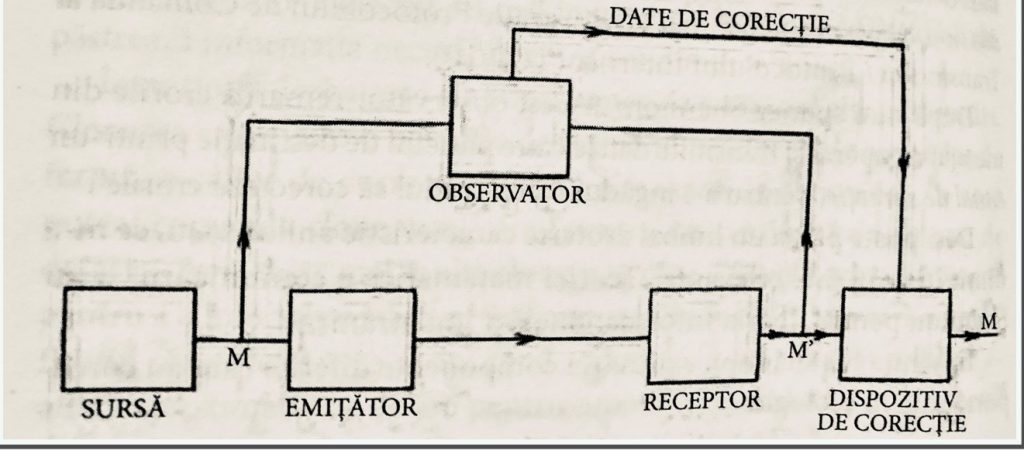 FIG. 1. Schematic Shanon diagram of a correction system
FIG. 1. Schematic Shanon diagram of a correction system
In other words, the observer notices the errors in the retrieved message and transmits the data to the destination point through a correction channel, allowing the receiver to correct the errors. This is how the Internet through protocols (TCP / IP) works today. FIG. 1 summarizes the description of this correction system.
This scheme was decisive for the launch of D. Sinclair’s Information Theory of Aging (1). He remarked after a while that there may be three parts in biology that have correspondents in the Shannon sketch.
- The source of the information is the parents’ egg and sperm.
- The transmitter is the epigenome that transmits analog information in space and time.
- The receiver is the body somewhere in the future.
When fertilizing an egg, epigenetic information is broadcast – the equivalent of radio signals, but biological. It travels between cells that divide over time. At first everything goes well and the egg develops into a healthy baby and possibly a healthy young man. However, after successive cell divisions, the signal becomes louder and louder as errors accumulate in the division. Eventually the receiver, that is to say the 80-year-old body, will have lost a large amount of original information and will not look at all like in adolescence.
To end aging as we know it, however, we should discover three more things that Shannon considers essential for restoring a disturbed noise signal.
- An observer to record the initial data, let’s say from a young age.
- Initial correction dates at the same time.
- A correction device designed to restore the original signal.
At first glance it seems that we are dealing with some tasks that are impossible to solve, but it was not so.
In 2006, Japanese Nobel Prize-winning stem cell researcher Shynia Yamanaka publicly announced that she had discovered a set of four genes that could cause mature cells to become pluripotent stem cells, meaning that they could become any other cell type. from the bodies of monkeys, cows, dogs and of course humans. This is equivalent to discovering the correction device in Shannon’s scheme because mature cells can become stem cells and pass into any type of cell. Cells that have lost their identity in the aging process can be guided to become young cells by the stem cell mechanism. This is equivalent to the DVD polishing solution, so you can listen to it again.
It is certain that cellular reprogramming can first be used to treat age-related diseases in the eyes, such as glaucoma and macular degeneration, because the eye is an isolated immunological organ. But as soon as it succeeds, it will certainly be implemented throughout the body to reset the age.
Following the scenario advanced by D. Sinclair, a simplified scheme derived from the Shannon diagram would unfold as follows.
At the age of 25, you will be able to follow a week-long treatment with three injections that will introduce an adeno-associated virus into the body that will cause a mild immune response, easier than the one that is felt after a regular flu vaccine. This virus has been known to scientists since 1960, and has been modified so that it does not spread or cause disease. This theoretical version of the virus will carry the 4 Yamanaka genes and is equivalent to the correction device in the Shanon diagram in Fig. 1. A safety switch that can be operated by a well-tolerated molecule, such as dioxicillin, would be equivalent to the observer device in the Shannon diagram. 1.
At that time / at the age of 25 / nothing will change in the functioning of the body’s genes. But around the age of 45, when the body begins to age, the safety switch will be activated by dioxicillin for a month, with which it will start reprogramming genes, ie data correction, by activating Yamanaka genes. From this moment on, the rejuvenation of the body begins. The wounds will heal faster, the white hair will disappear, the thinking will be faster and there will be no need for glasses. The process will continue in the opposite direction until the age of 25, after which the process will stop, because the same treatment will be applied with the adeno-matos virus that contains the 4 Yamanaka genes. The body will start to age slowly again and after 20 years, when the first signs of aging will appear again, the safety switch will be activated again, triggering cellular reprogramming. In this way the body will always oscillate between 25 and 45 years. During this time, the body will always be young, not only in the way it looks, but also young and essentially free from the anxieties of the pains and discomfort of middle age, as well as the fears of caring for cancer or heart disease. .
However, this process cannot be repeated an indefinite number of times. At this stage of development, it is foreseeable that there will be an even digital noise with each iteration that will make the process difficult and will eventually stop it. But scientists remain optimistic in two ways. Either the noise will be able to be canceled, or another scheme will be imagined, in which aging can simply be stopped.
Intensive research is currently being done on guinea pigs to make sure that various forms of cancer or other conditions are not induced. When it becomes clear that this is the case, the transfer of approach to people will be inherent.
Although it may seem like great fiction at first glance, David Sinclair of Harvard is super optimistic and gives assurances that it will soon become a reality for the benefit of us all. He is not alone, not even close! Recently, the press announced that Israeli researchers have also found a way to reprogram their cells.
Hoping that this essay on such a burning issue will arouse your interest and curiosity, I stop here and thank you for your attention.
BIBLIOGRAPHY
- David Sinclair with Mathew D, LaPlante, Lifespan, Why we Age and Why Don’t Have It, Lifestyle Publishing 2020.
- David Sinclair, Leonard Guarantee, a Cause of Aging.
- Pavelescu, The Copernican Principle and the Longevity of the Human Race, AOSR, 2018.
- Baur, D. Sinclair, Therapeutic Potential of Resveratrol, https: // www. Nature .com.
- Rajman, D. Sinclair, The Therapeutic, Potential of Nad-Boosting Molecule, https: //. ncbi. nlm..nih..gov.
Author: Mărgărit Pavelescu – President of the Physical Sciences Section
Academy of Romanian Scientists
Essay held in the seminar meeting of SF-AOSR from 18.05.2022
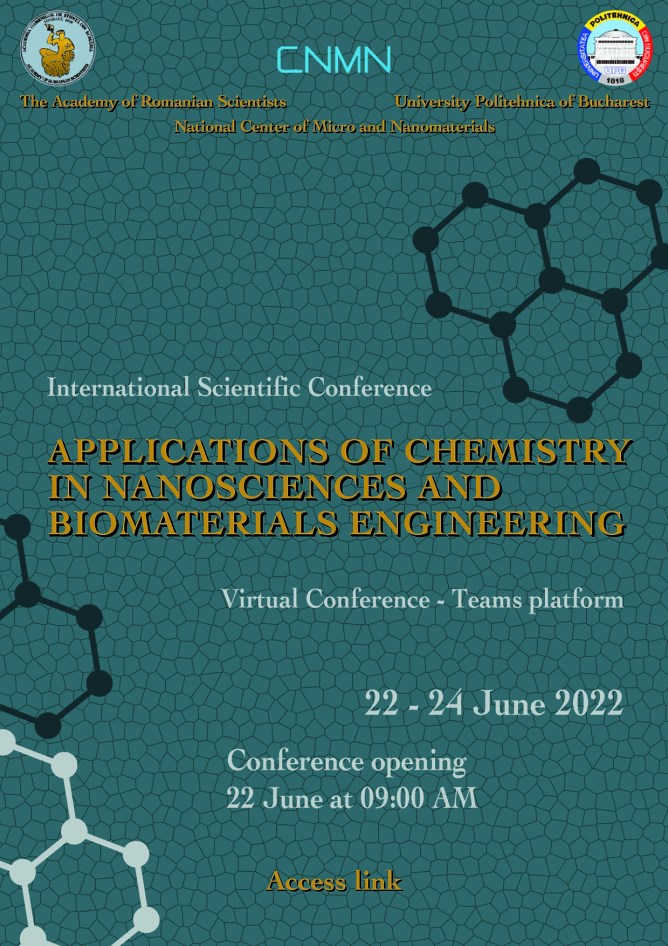


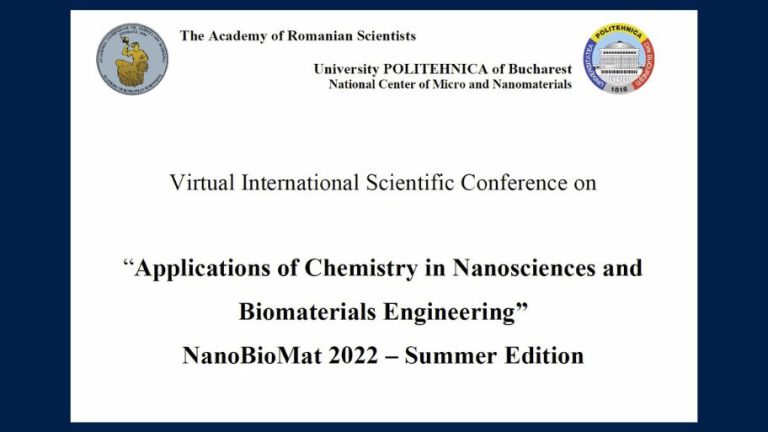
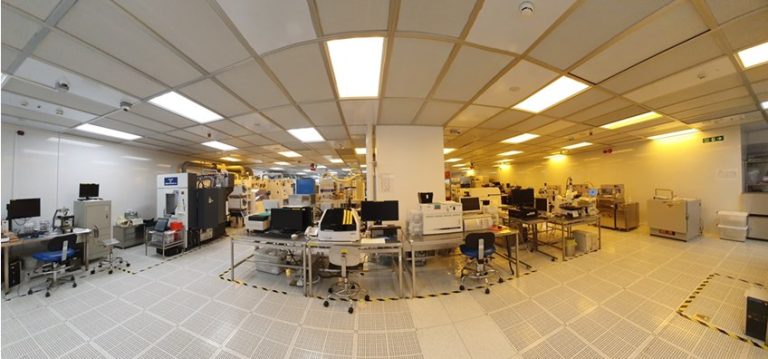
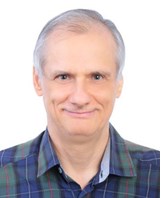
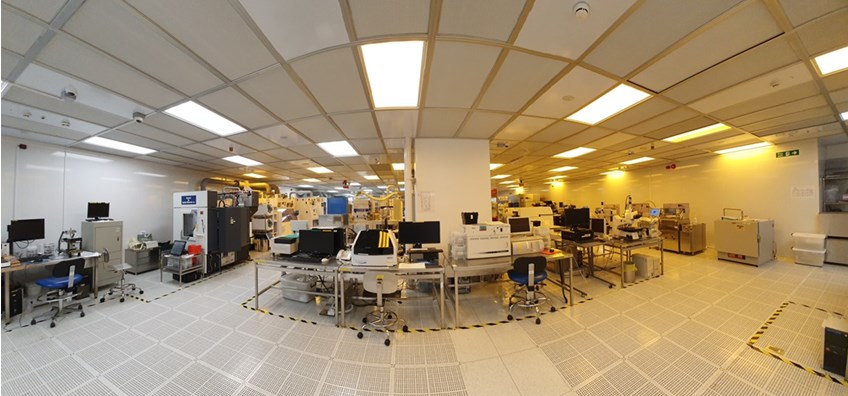
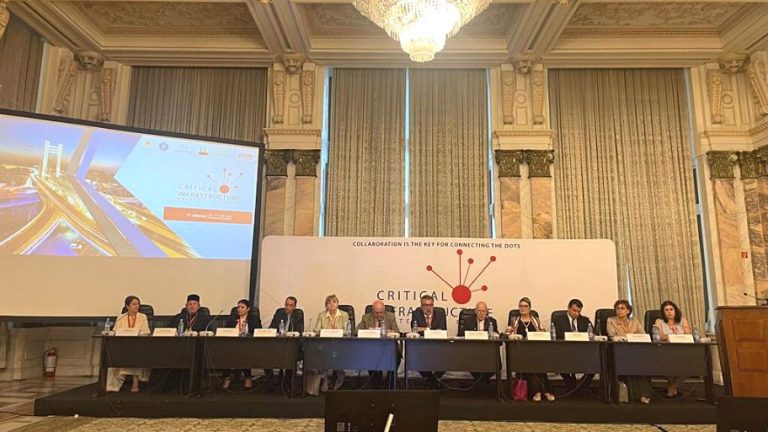
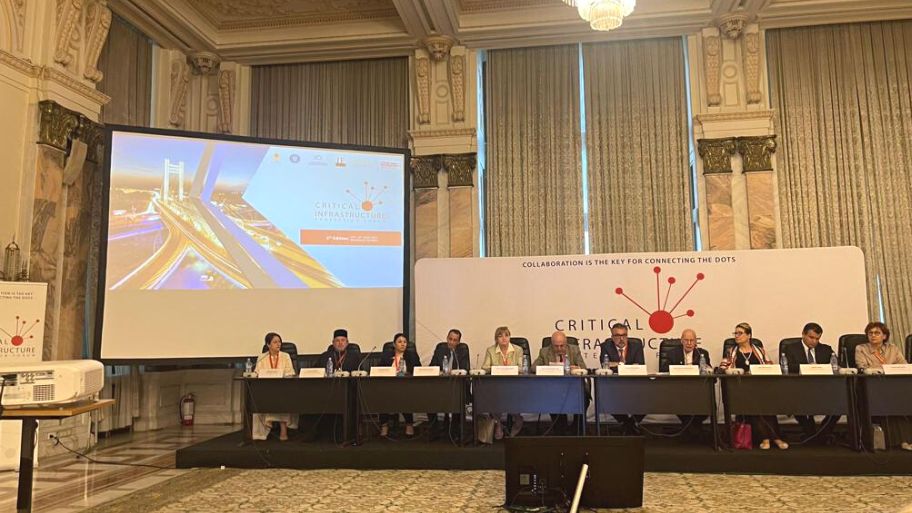
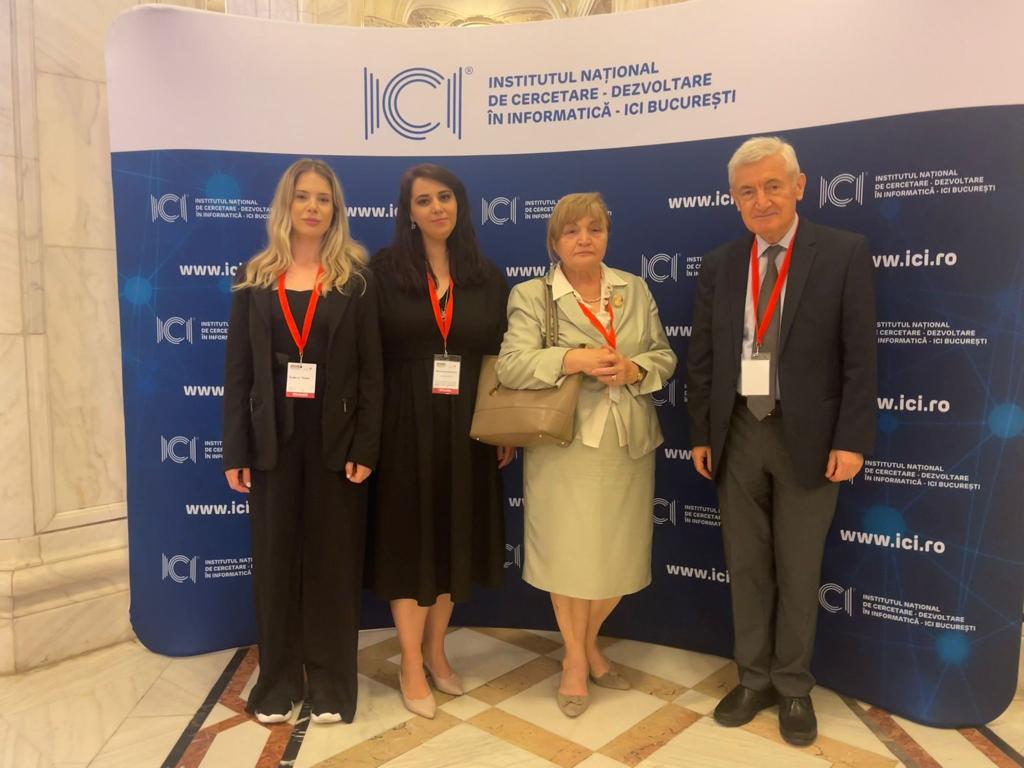
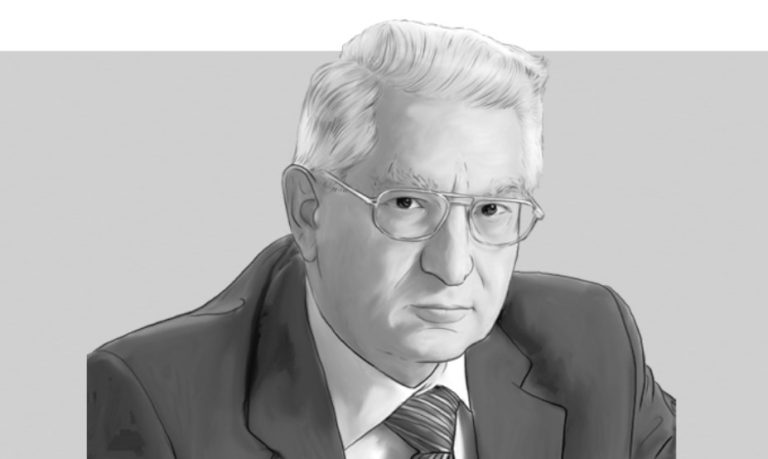
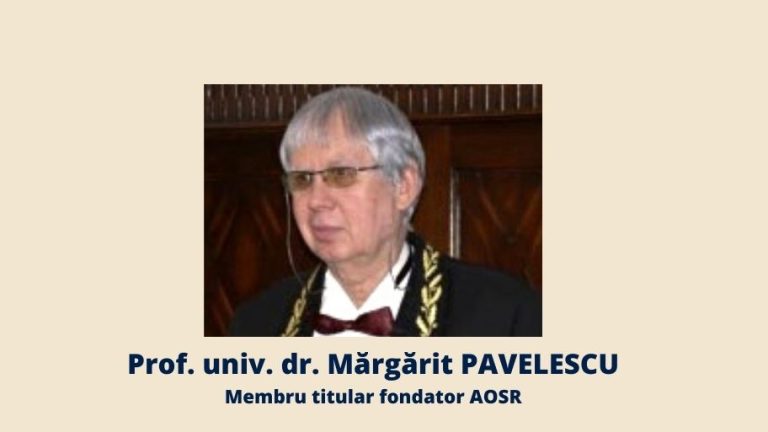
 FIG. 1. Schematic Shanon diagram of a correction system
FIG. 1. Schematic Shanon diagram of a correction system